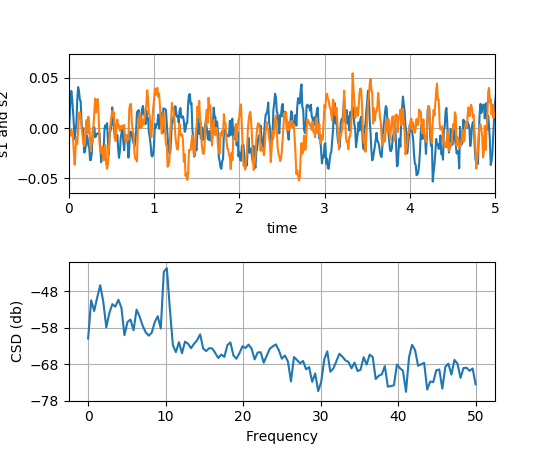
(Source code, png, pdf)

"""
Compute the cross spectral density of two signals
"""
import numpy as np
import matplotlib.pyplot as plt
fig, (ax1, ax2) = plt.subplots(2, 1)
# make a little extra space between the subplots
fig.subplots_adjust(hspace=0.5)
dt = 0.01
t = np.arange(0, 30, dt)
nse1 = np.random.randn(len(t)) # white noise 1
nse2 = np.random.randn(len(t)) # white noise 2
r = np.exp(-t/0.05)
cnse1 = np.convolve(nse1, r, mode='same')*dt # colored noise 1
cnse2 = np.convolve(nse2, r, mode='same')*dt # colored noise 2
# two signals with a coherent part and a random part
s1 = 0.01*np.sin(2*np.pi*10*t) + cnse1
s2 = 0.01*np.sin(2*np.pi*10*t) + cnse2
ax1.plot(t, s1, t, s2)
ax1.set_xlim(0, 5)
ax1.set_xlabel('time')
ax1.set_ylabel('s1 and s2')
ax1.grid(True)
cxy, f = ax2.csd(s1, s2, 256, 1./dt)
ax2.set_ylabel('CSD (db)')
plt.show()
Keywords: python, matplotlib, pylab, example, codex (see Search examples)